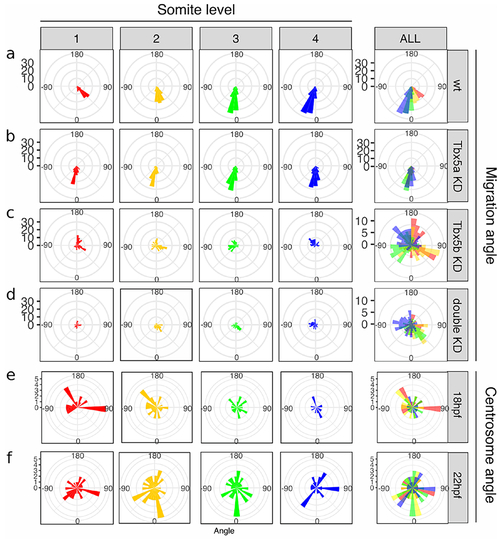Fig. 7
- ID
- ZDB-FIG-230112-7
- Publication
- Anderson et al., 2021 - Tbx5a and Tbx5b paralogues act in combination to control separate vectors of migration in the fin field of zebrafish
- Other Figures
- All Figure Page
- Back to All Figure Page
|
Cellular movements are randomized in Tbx5b and double knock-down embryos.
The rose diagrams in a-d represent the angle of migration with respect to the ML axis. Angles are divided along the AP axis, with cells adjacent to somite 1 in red, cells adjacent to somite 2 in yellow, cells adjacent to somite 3 in green and cells adjacent to somite 4 in blue. (a) Wildtype embryos show a directed migration, with different angles of migration for somites 1-4. (b) Tbx5a knock-down embryos display equivalent angles of migration across the AP axis. (c) Tbx5b knock-down embryos show wt-like angles of migration along the AP axis, but randomized ML movements. (d) Double knock-down embryos display both AP and ML changes to the angles of cell migration across all positions. (e-f) Angle of xCentrin::RFP expression with respect to the nucleus in the cells of the wt fin field. (e) In 18 hpf embryos, the angle of xCentrin::RFP expression with respect to the nucleus displayed no significant bias in angle. (f) At 22 hpf, the angle of xCentrin::RFP with respect to the nucleus displayed no significant bias in angle. |
Reprinted from Developmental Biology, 481, Anderson, E.B., Mao, Q., Ho, R.K., Tbx5a and Tbx5b paralogues act in combination to control separate vectors of migration in the fin field of zebrafish, 201-214, Copyright (2021) with permission from Elsevier. Full text @ Dev. Biol.

